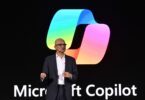Mark Jamison
Elon Musk created a stir by becoming Twitter’s largest shareholder and then offering to buy the company outright. He says he wants to create a public platform that is “broadly inclusive” and “maximally trusted” while putting little emphasis on profits. If this is what Musk wants to do, this is the moment.
Some people, including Twitter employees, are skeptical that Musk could run a successful Twitter based on principles of free speech. Critics argue free speech only enables terrible people to say terrible things, which destroys social media platforms and society. They’re wrong. Musk can have his cake and profits too if he turns Twitter into a new kind of common carrier—namely, a decentralized platform in which speakers, packagers, and artificial intelligence developers compete for users and their attention. Such a platform would put the listeners in charge, allowing them to hear both what makes them comfortable and what challenges them.
Today’s social media users appear conflicted in what they want. A Morning Consult survey found that even though social media users of all political stripes say they want platforms with viewpoint diversity, users tend to cluster with like-minded people. For example, Twitter is largely made up of stable networks of elite users and their non-elite followers who tilt left politically: Just 10 percent of Twitter users produce 92 percent of all tweets from US adults, and 69 percent of these highly prolific users align with Democrats. And according to a YouGovAmerica survey, left-leaning social media users are almost twice as likely as conservatives to believe that people should be banned or their content should be removed from social media if said content is “objectionable.”
Users are expressing dissatisfaction with today’s social media landscape in multiple ways. One way is their growing use of multiple accounts: The average American has more than seven social media accounts, and on a global basis, the number of accounts per person nearly doubled between 2014 and 2020. There is also a growing distrust in these platforms: According to a 2021 Cato Institute survey, 75 percent of Americans do not trust social media companies to be fair in their content moderation. The same survey demonstrates that the number of individuals holding favorable opinions of the internet industry has fallen 50 percent since 2017. Users consistently say they want more control over how platforms gather and use information, along with alternatives to typical advertising-based business models.
These preferences, conflictions, and dissatisfactions reveal a business opportunity for Musk. A more successful Twitter would give users options, including allowing them to preserve their desired online communities. Despite the confirmation biases, tribalism, and other negative behaviors that they foster, communities also provide norms and a sense of well-being that are necessary for people to function efficiently, develop mental health, and create foundations for exploring new ideas.
A new Twitter would also encourage users to venture out in new and different ways. Users could personally explore all content that others post, subscribe to certain content providers or packaged content (as allowed by Substack or Locals), and opt for alternative prioritization and moderation algorithms, perhaps including the current Twitter, which Musk could call “Twitter Classic.” Users could make these choices instantaneously, so a user could view favorite writers one minute, then quickly switch to an average-Democrat algorithm or a Midwestern millennial profile the next.
Musk could accomplish this by using blockchain and cryptocurrency technologies. Twitter could treat content as non-fungible tokens (NFTs), allow users and entrepreneurs to use smart contracts to match content to viewers, and utilize a cryptocurrency payment system. NFT treatment of content would protect copyright, providing journalists with a new business model. These journalists’ smart contracts could allow them to profit from others reading, sharing, and citing content, and maybe from rewarding promoters. Entrepreneurs could use smart contracts to compete in packaging content—much like newspapers compete today—or providing algorithms that identify and prioritize content. Smart contracts would also allow users to choose how information about them is gathered and used, and choose the amounts and types of advertising they might see. This business model could do away with Twitter’s “need” (if the current employees are correct) to ban persons or content, as each user would be in charge of what he or she views, and packagers and algorithm entrepreneurs could flag for themselves the types of content that create viewer experiences they want to provide.
This business model aligns with what a common carrier was meant to be. The common-carrier concept evolved over centuries as communities struggled to develop rules for trustworthy systems that allow senders and receivers to engage in commerce at a distance. By moving to blockchains, smart contracts, NFTs, and cryptocurrencies, Twitter can take the common carrier to a new level—one that allows senders and receivers to engage in customized experiences on a moment’s notice.
Courtesy: (AEI.org)






